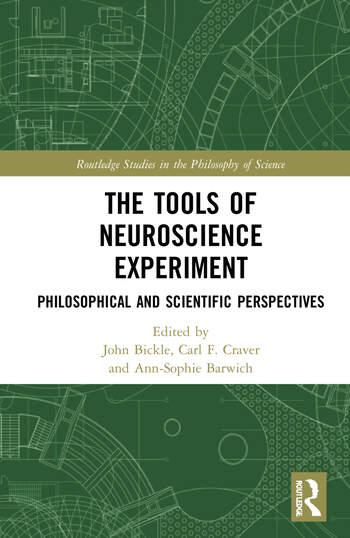
Hindsight may make this revelation seem obvious. As a witness to the development of this experiment, however, I observed two narratives. The first is a story of triumph. The second story involves the varying paths taken until success became a realistic prospect.
The solution was both elegant and important in what it meant. Enhancement effects suggested an allosteric mechanism at the receptor level. Allosteric means that a receptor doesn’t simply switch it on when it interacts with substances, but that receptors can change their configuration and behavior when elements bind to another binding site, the allosteric site (imagine you touched water and, upon your finger reaching the surface, it became ice). The receptor is now responsive to elements it was previously insensitive. Allosteric modulation has not yet been found in other sensory systems. These interactions explain why combinations smell differently than their parts. Ultimately, Lu’s discovery of inhibition and enhancement effects at the periphery could now explain on a molecular level what perfumers have known from perceptual experience for a long time: smells don’t simply add up in mixtures. These effects were once thought of as “quirks” of the human experience, but they may now be vital to understanding how we smell.
Xu et al. (2020) contributed to this shift by discovering a molecular mechanism at the olfactory periphery previously unknown in sensory systems: allosteric modulation. Allow me to geek out and explain why this is a significant empirical finding—for and beyond olfaction. And why, in this context, we need to talk more about the cognitive role of experimental tools in scientific discovery.
Xu et al. (2020) did. Critical to their triumph was a new tool: SCAPE (Swept, Confocally-Aligned Planar Excitation) microscopy, developed by the Hillman lab at Columbia. SCAPE permits simultaneous observation of the behavior of individual cells and large groups of cells in living tissue … and in real time! You can therefore spray a stimulus or multiple stimuli over the nasal epithelium of a rat and observe which and how many cells are triggered (see video below). The technology appeared tailor-made for the empirical challenge of mixture perception. While the empirical challenge of olfactory mixtures seemed almost designed to demonstrate the tool’s enormous potential.
Philosophy and Cognitive Science
Imagine for a moment that you are observing the development of a groundbreaking experiment right before your eyes. You rapidly recognize that this study will make substantial contributions to the field and actually break new ground, but you are unable to disclose its specifics with anybody – until you can.
For philosophers and scientists, what lessons can be learned from these accounts of experimental inquiry? It allows us to see the larger picture of discovery and the issue of how scientists actually generate new knowledge rather than only defending existing theories or justify their models.
Ann-Sophie Barwich
For a while, the lab was stumped. To explain such effects, a new causal model was required. In true dramatic fashion, the solution came last minute. Last minute fort me, that is. I received an email by Stuart two days before I had to hand in the revision of my book on the science and philosophy of olfaction. He wrote: “So, attached is a confidential draft of the inhibitor/enhancement manuscript. We will submit by the middle of next week and then put it up on bioarxiv. You should pay attention to the introduction and the discussion. Especially you might be interested in figure 7 (the last figure) which is a model of how this may work in olfactory perception. It’s largely Lu’s idea and I think it’s very simple and very clever. It is explained pretty well in the discussion and in the figure legend but if you have any questions, I’ll do my best to answer them.”
Overall, we used the SCAPE study to suggest that experimental techniques and technologies should be considered as constitutive and active aspects of scientists’ reasoning in order to understand how they assist the development of new ideas in neuroscientific research. This concept connects to the “distributed cognition” hypothesis in cognitive science (and further links to other HPS accounts, such as Ursula Klein’s paper tools in chemistry). Distributed cognition accounts emerged in the 1980s and have gained favor in recent decades in the study of cognitive processes. The application of these cognitive concepts to the philosophical analysis of scientific activity holds promise for enhancing our understanding of scientific practice (notably, Ron Giere had noticed that as early as 2003). Distributed cognition sees scientists’ and other cognitive agents’ brains embedded in a larger system. It frames cognition as a process, not a product. Tools, equipment, scientific representations, social institutions, and even other scientists, according to this viewpoint, are all part of the cognitive process. These factors are causally integral to the scientist’s cognitive process as an epistemic agent, enabling and structuring the relevant cognitive procedures.
This is precisely what the chapter elaborates upon. It provides a behind-the-scenes analysis of the numerous techniques (and failures) of adapting a tool to its practical problem, as well as how the experimental challenge was modeled after the instrument’s specific affordances. Specifically, Lu and my chapter employs an oral history account to make a philosophical point about how an experimental tool structures the cognitive process of experimenting, including the interpretation of its consequences. It feels difficult to summarize Lu’s fascinating odyssey of making the tool fit its material challenge (or the materials fit the tool?) in a short blog post. So let me tease with philosophical conclusions which you will find substantiated in our chapter.
One of the most important questions in the study of smell has been, “Which and how many receptor cells do chemicals turn on?” Also, when this chemical is mixed with other chemicals, do the same receptors still react? Researching the responses of odor receptors to single molecules has been hard for a long time. The study of responses to complex mixtures presented an even greater experimental challenge. Like the prefrontal cortex in general neuroscience, no one in their right mind would want to touch the topic of mixtures.
University of Indiana, Bloomington
Such an experiment is the focus of my chapter. During my three-year postdoctoral research at Columbia University, I had the rare opportunity to work in the laboratory of the neuroscientist Stuart Firestein (who also wrote the Preface to our volume). My time in Stuart’s lab dramatically transformed my empirical philosophical outlook. My co-author of this chapter, the extraordinarily gifted Lu Xu, was working as a PD student in his lab at the time, and they had just begun investigating olfactory mixture perception. Back then, olfaction was considered a “niche” subject. This view was very soon about to change. Recent research has demonstrated that it can bring novel insights into the organization and communication of neurons, philosophical theories of perception, and the biological foundation of cognitive processes.
The experiment itself sounds relatively straightforward. Xu used two three-compound combinations on genetically modified mice. She observed responses of ~10,000 cells to monomolecular, 2-part, and 3-part mixtures. And she discovered two things. First, some cells reacted to individual compounds and binary mixtures, but stayed silent in response to the 3-part mixture. Such inhibition effects were not unexpected. Some substance can act as agonists, meaning they can block receptor cells which then won’t respond (or respond less) to other substances. Still, the effect size was surprising (>20%). Meanwhile, another effect was observed that was entirely unanticipated. Some dormant cells became active when exposed to the 3-part blend. Remarkably, these cells would only respond to 3-part blends, not to single compounds or even 2-part mixes. There was no ready-made explanation for such enhancement effects. Sure, olfactory coding might not be linear. Buy what’s the mechanism?




